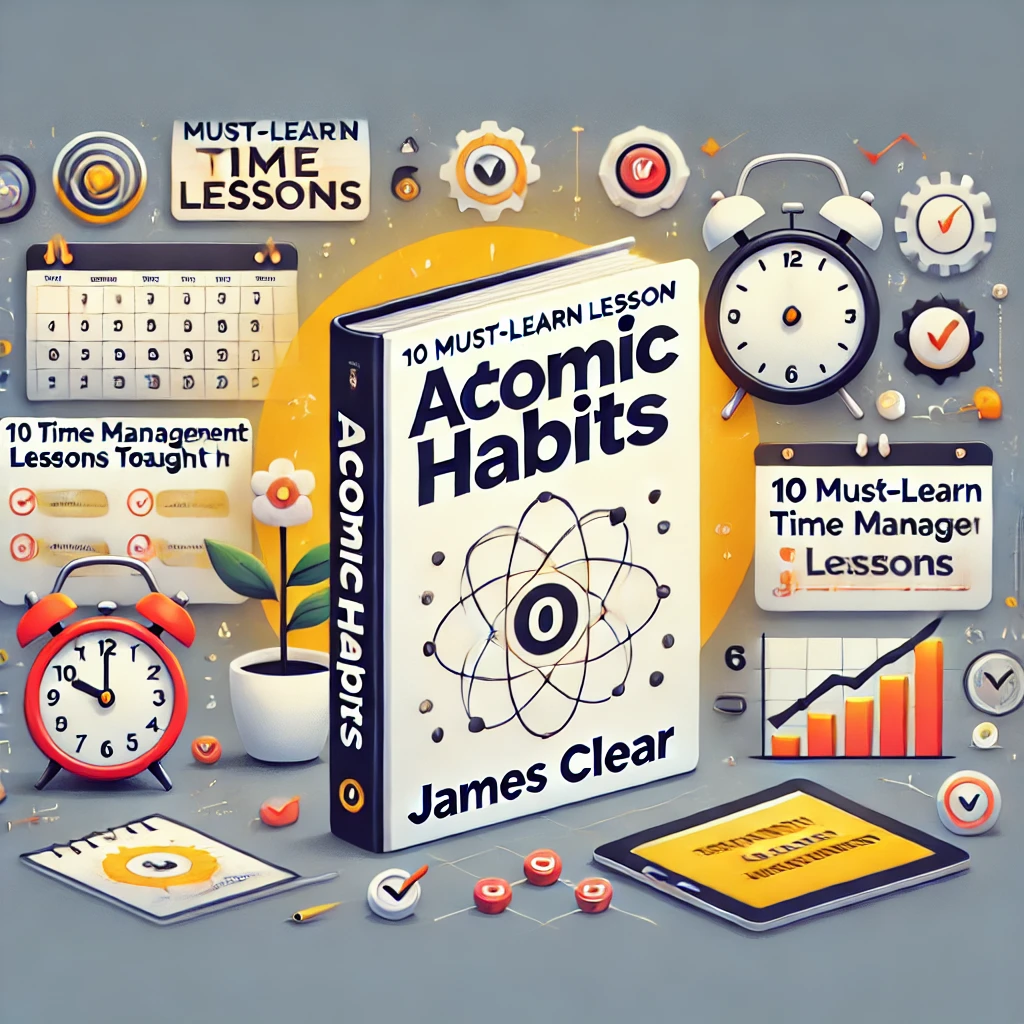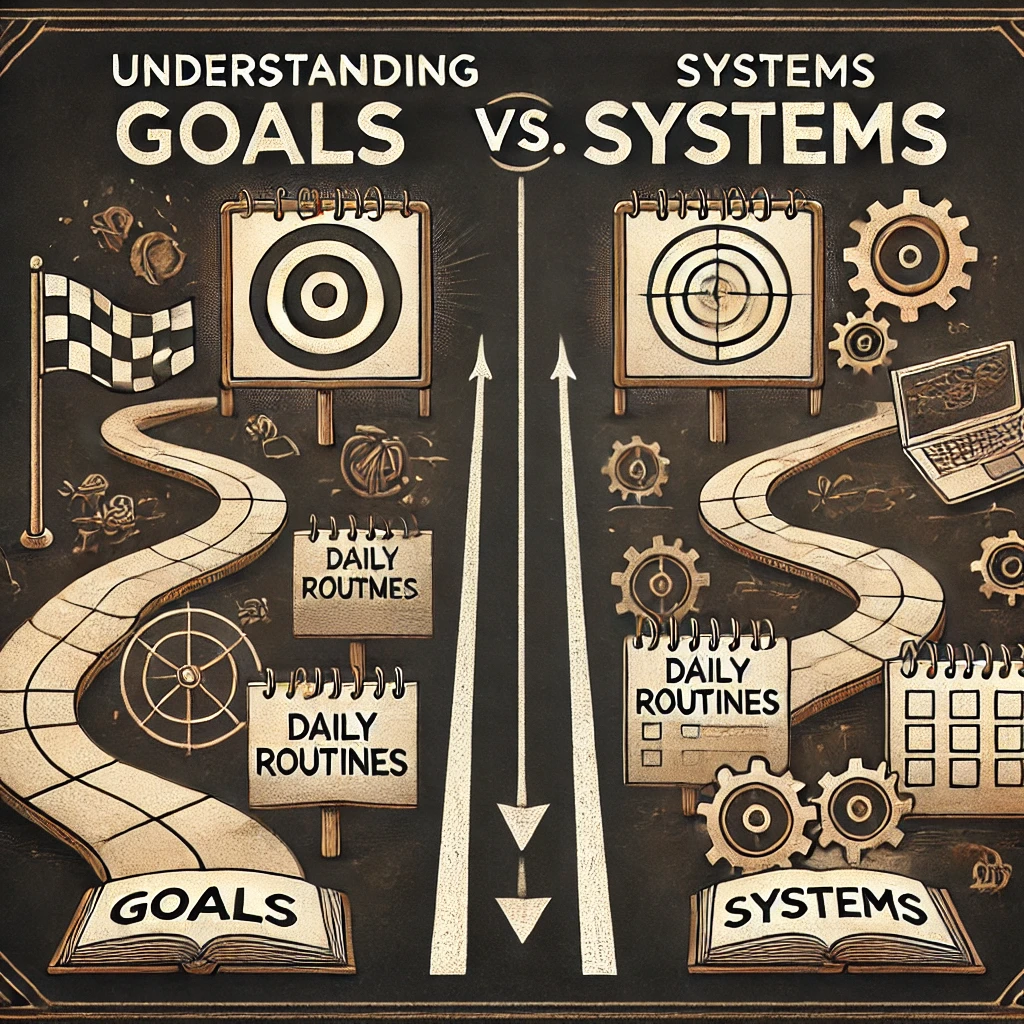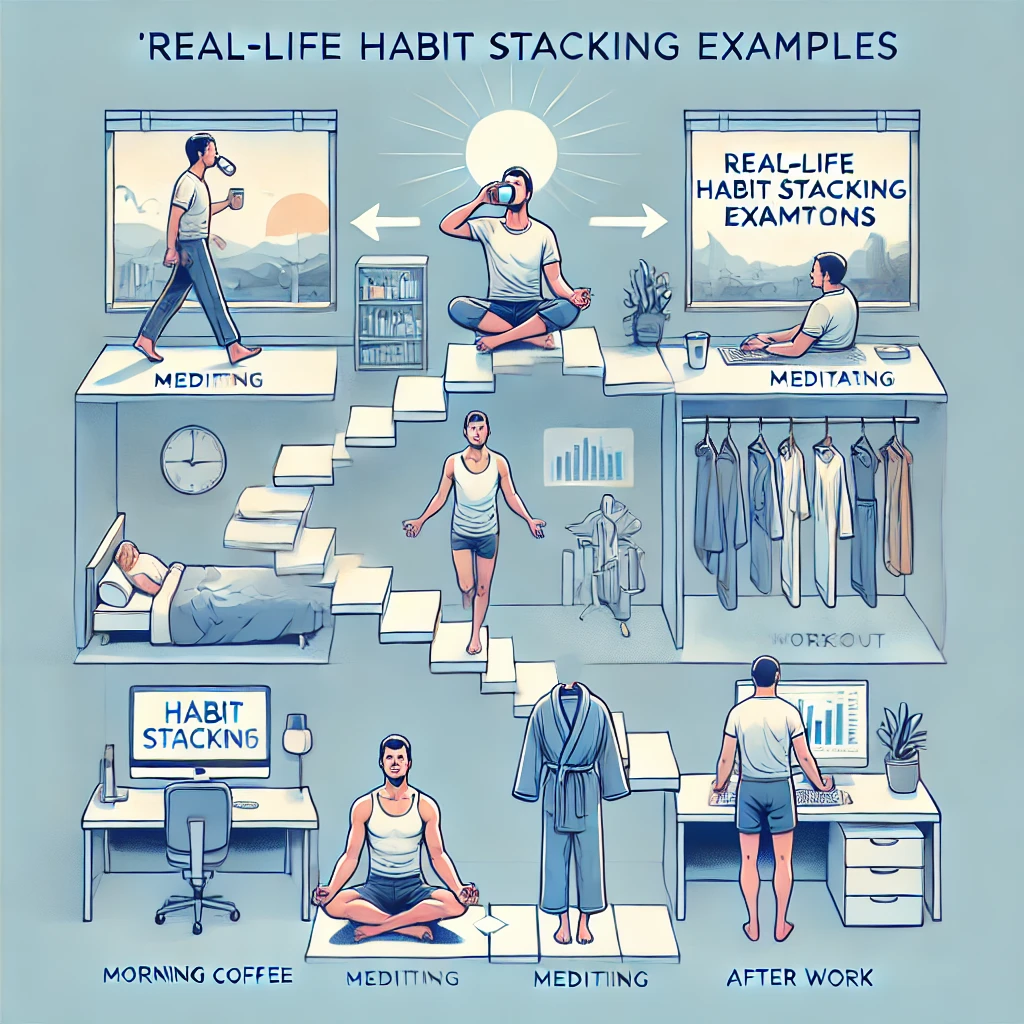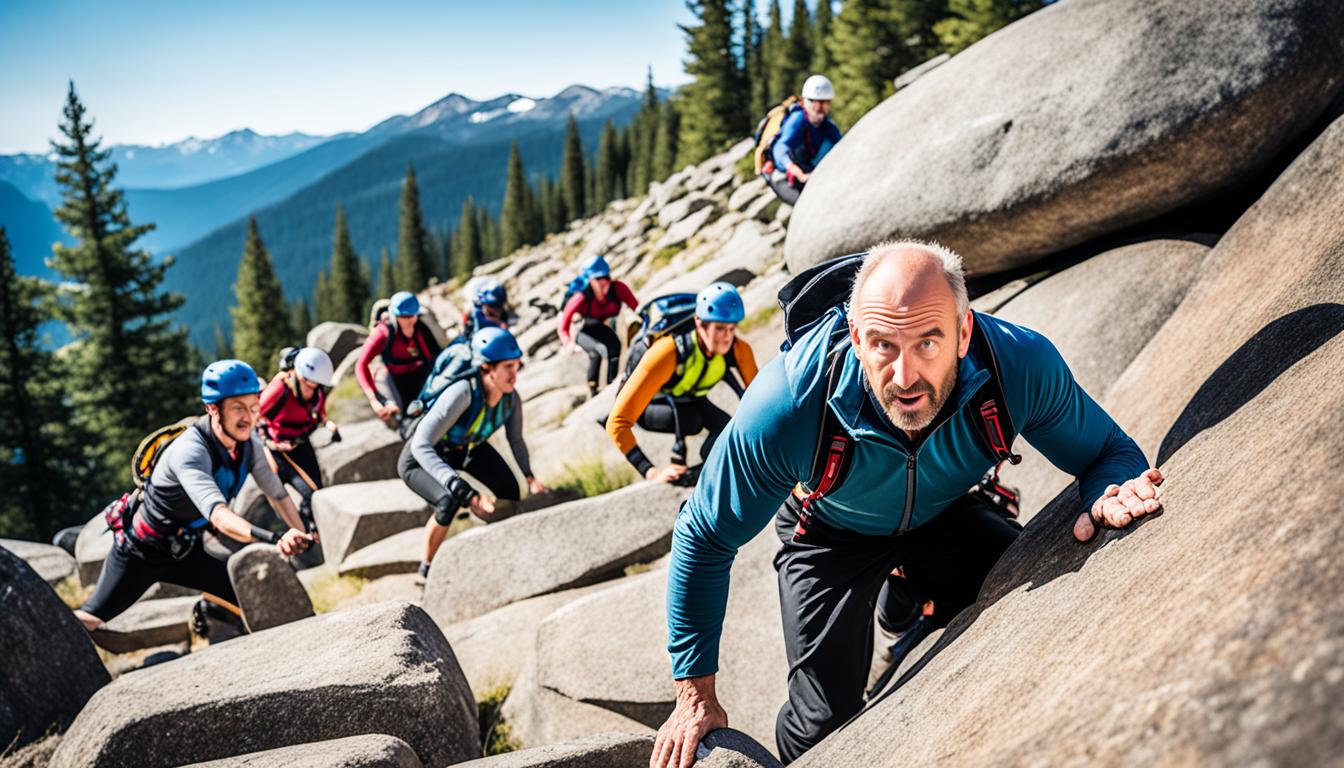“Atomic Habits” by James Clear grabbed the top spot in 2020. It unpacks key strategies for managing time and forming good habits. Its impact on productivity is profound. Many readers even marked it as the first book they fully read. They found its advice practical and life-changing.

The book talks about changing behavior in a detailed way. It explores Outcome, Process, and Identity change. James Clear introduces powerful techniques such as the Implementation Intention and Habit Stacking. These methods help people easily add new habits to their routines.
He also talks about making good habits more tempting. He suggests mimicking the habits of influencers close to us. The idea is to use the Law of Least Effort to our advantage. This means choosing easy options. Clear’s Two-Minute Rule helps in making new habits seem doable. This makes it easier to stick to them.
By focusing on small improvements and setting up our environments for success, “Atomic Habits” is a must-have guide. It helps anyone looking to boost their time management skills and create change that lasts.
Focus on Systems, Not Goals
In “Atomic Habits,” James Clear talks a lot about how systems beat goals every time. He says that having a good system in place is what really helps you win. It turns small victories into lasting changes.
Understanding Goals vs. Systems
Goals are what you aim for, the big dreams you have. But, Clear warns, just focusing on goals can backfire. It makes people unhappy and stops real progress.

James Clear learned this the hard way, trying and failing at many goals. He got his idea of systems from Scott Adams. Adams wrote about it in the Wall Street Journal. Now, Clear’s book and newsletter, which lots of people love, say the same thing: Work on your system to really win.
Implementing Effective Systems
Good systems are about daily routines and solid plans. Take a coach, for instance. They might focus on daily practice over just winning. This helps build strong habits and improves the process.
Studies back up this way of thinking. They show that too much focus on goals can lead to bad behavior. But working on systems makes good habits stick. By adding feedback and making small changes, people stay on track without the stress of just aiming for a big goal.
Systems thinking is key for long-term success. It’s not just about hitting goals but improving every day. It’s a bit like how Agile Methodology focuses on the journey, not just the finish line.
Layered Behavior Change: Outcome, Process, and Identity
In the quest for making changes that stick, it’s key to know about three layers. These are results, actions, and who we see ourselves as. Each layer plays a part in how well and how long the change will last. We aim for certain results, take actions to get there, and sometimes, truly changing means we see ourselves in a new light.
Three Layers of Behavior Change
Author James Clear breaks down changing behavior into three layers. First, we have our desired results. These could be anything from losing weight to learning a new skill. Next, the things we do daily, like work or study schedules, fall under processes. But the deepest level is about who we are, changing how we see ourselves and the world.
Identity change is at the heart of lasting change. Think about it. Becoming someone who exercises regularly or writes every day is powerful. It makes our new habits part of how we define ourselves. These small victories are huge boosts, showing us we can truly become the person we want to be.

Real-Life Application Examples
Take someone who wants to quit smoking as an example. Instead of just aiming to stop smoking, they become a ‘non-smoker’ in their mind. By changing how they see themselves, they connect more deeply with the goal. This new identity helps keep the motivation strong and the change steady.
In daily life, think about being someone who walks more, writes a lot, or makes time for friends. These habits show how realizing who we want to be can drive big change. It’s about more than just doing certain things. It’s about truly changing how we see ourselves. This way, every part of the change process comes together, making the impact last.
The Importance of Implementation Intention
When we talk about forming habits, “Atomic Habits” shows how important implementation intention is. It’s more than just setting a goal. This method focuses on the specific “when” and “where” of doing a plan, which makes it more real. Knowing the exact details of a plan helps people stick to their habits better.
Gollwitzer and others found that having detailed plans makes a big difference in reaching goals. To prove this, they saw that setting exact times to start something overcomes wanting to delay. Those with a clear plan started faster and did better, even if they weren’t super motivated.
Even little kids can benefit from these plans. A study with 6-year-olds showed they could keep their goals better this way. These plans also help folks stop using ways that don’t work, helping them reach their goals better.
But, many still struggle to get enough exercise, a problem that gets worse with age. Around the world, about one in four adults aren’t active enough. Using implementation intentions, a study found that middle-aged people could exercise more. This shows how powerful these plans can be.
What stops us from acting on our plans can be how well we think they’ll work, how much we think about them, and how strong they are. Using tools like pedometers can also help to reach exercise goals.
Knowing about implementation intentions can change for the better how we act, even in busy times. They are strong methods for achieving what we set out to do.
Using Habit Stacking for Efficiency
Researchers found adults have 41% fewer neurons than newborns. This is due to synaptic pruning. It reduces unused connections and strengthens used ones. The habit stacking technique uses this. It connects new habits to existing ones, making a stronger support system.
Habit Stacking Formula
James Clear suggests this formula: after [CURRENT HABIT], I will [NEW HABIT]. This formula uses the strength of old habits to add new ones easily. It kicks off the Diderot Effect, where one change leads to more. It’s important to pick a very clear trigger. This ensures the new habit starts efficiently.
Real-Life Habit Stacking Examples
Real-life habit stacking is easy and works. For example, meditating after morning coffee or changing to workout clothes after work. These simple additions lead to daily routines with new habits. This makes habits stick.

Moreover, habit stacking lets you set simple rules for better behavior. Always choose stairs over elevator. Or meet new people when you arrive at a party. This approach makes the brain like doing these tasks automatically. It turns small habits into easy, regular steps.
Pairing habits can start a chain of good actions. Like being thankful after dinner. This adds the habit of gratitude into your daily routine. It shows that adding these techniques together can really improve your daily life.
Studies show that habit stacking really works. It is a key method for making your routines better and being more productive in the long run.
Temptation Bundling: Pairing Desires with Needs
Temptation bundling is a smart trick created by James Clear. It uses how our minds work to help us achieve more. By joining a fun activity with something we need to do, we can make good habits stick.
Concept of Temptation Bundling
James Clear’s idea of temptation bundling is based on pairing things up. For example, listening to your favorite podcast while at the gym. An experiment by Milkman showed this helped people go to the gym more.
This trick uses a quick reward to make us want to do things. A study from Cornell found that getting a reward right away makes us enjoy things like exercise more. It all comes down to making good habits fun.
Practical Examples
Research by Eric H. Schumacher at UC Berkeley shows multitasking can work if tasks don’t clash. This is why habit pairing helps. For instance, doing meal prep while listening to a good audiobook.
In a 2014 study, getting iPods with audio-books just for the gym made more people go. This proves mixing a treat with a job boosts how motivated we are to do it.
James Clear warns us not to mix two boring tasks together. Instead, pair something fun with the not-so-fun to get it done. This keeps us moving forward.
A great way to make new habits last is by linking them to our current ones. James Clear calls this habit stacking. By using both methods, we can really stick to our goals and make them a lasting part of our lives.
The Law of Least Effort
The Law of Least Effort states people choose easy over hard naturally. Therefore, making good habits easy is key. James Clear suggests changing where we put things. This makes doing what we want, the easy choice.

Making Habits Easy
Easy-to-do habits are important because they lead to big results. Pareto’s principle says 80% of our work comes from 20% of our tasks. So, making those few tasks simple is vital. This is like Carlson’s Law, which notes that interruptions slow us down. Cutting out these diversions makes work smoother.
Examples in Everyday Life
Applying the Law of Least Effort in everyday life can have great effects. For instance, spending a few hours on a weekend to prepare meals makes eating well easier. Also, using apps to plan our day makes life less stressful. These methods show making habits simple can bring lasting, positive changes. Choosing the easy way can help us stay on track.
The Two-Minute Rule for Quick Wins
The Two-Minute Rule is a key idea from “Getting Things Done” by David Allen. It makes a big difference in starting habits and stopping putting things off. The rule says if something takes two minutes or less, just do it. This leads to quick achievements and a good feeling of getting things done. Studies at Stanford show doing many things at once makes us less effective. So, handling short jobs quickly helps us start a positive cycle.
Using this rule, it’s smart to deal with things right after meetings or keep your workspace neat. Also, getting ready for the next day in advance can really help. These little steps boost how much you get done and keep you from getting too tired. James Clear, who wrote “Atomic Habits,” says it’s a great way to form new habits. It shows that starting small can take you far in the end.
But watch out for spending all day on these small tasks. That can actually slow you down. So, it’s important to pick what’s most important and links to your personal or work goals. Planning interruptions off for big tasks and setting daily targets is a way to make the most of your time.
What’s even better is how the Two-Minute Rule makes starting habits easy. You just cut big tasks into small steps. This can work for many kinds of habits. For example, reading one page before bed each night. It’s these little steps that help us keep going. That’s how you make habits that stick and get more done.
The Power of Marginal Gains
Marginal gains focus on improving little by little, leading to big changes over time. This method shows how small steps forward can bring great success. Many examples show how this approach has worked well in various areas.
Getting 1% Better Every Day
Getting 1% stronger every day works by adding up many small increases. These small improvements build over time, bringing big progress. Team Sky in cycling, led by Sir Dave Brailsford, used this. They won the Tour de France earlier than planned, proving this method works.
Impact of Small Improvements
Small changes matter a lot, not only in sports. For instance, placing products at eye level can boost sales. British Cycling also improved in small steps and saw huge success. Their strategy helped them break records at the Olympics.
This strategy can lead to significant improvements over time. In a year, making 1% progress daily can make you much better than those who don’t. It emphasizes that staying the same is not enough in today’s world. Always looking to improve small things can lead to big achievements.
The Role of Environmental Design in Time Management
Environmental design is super important for managing our time well. It creates spaces that help us work better. For example, a clear desk makes it easier to focus. This leads to reaching our goals easier and feeling better.

Setting Up Your Environment for Success
To succeed, your surroundings should help, not hinder, you. Keep your space tidy and everything easy to find. Use tools like planners and apps to keep track of what you need to do. Having a clean area helps you stay focused, reducing stress.
Examples of Environmental Changes
Changing your space can really help you manage time better. Ergonomic furniture, like sit-stand desks, can make work more comfortable. Have separate areas for different activities. For example, a quiet place for reading or a work desk. This helps you switch tasks easily. Also, setting up your computer with less distractions can help you work better.
Making good habits easy and bad habits hard is key to designing your space. Keeping healthy snacks where you see them can help with smart choices. Hiding snacks you should avoid makes it easier to say no. Planning your space this way builds good habits and helps you manage your time efficiently.
Maintaining Consistency for Long-Term Success
Consistency is key for lasting success, says “Atomic Habits.” Doing things regularly makes them part of who we are, guiding us to achievements smoothly. James Clear stresses that acting often, not hard, brings real change.

About 70% of students find sticking to a plan helps them manage time better. They like having a set schedule for study and fun. Using tools like Google Calendar helps them stay organized and focused, sticking with clear habits.
Getting reminders is vital. Alerts improve how well students meet deadlines, studies show. Jerry Seinfeld’s X method on calendars proves visually seeing progress keeps focus strong.
Thinking about cues and rewards is also important. When your brain’s basal ganglia react to a cue with a reward, habits get stronger. So, making habits fun boosts your success chances.
‘Falling in love with the boredom’ highlights the need to keep at it every day, even when it’s not fun. Doing things regularly sparks long-lasting wins, showing how vital consistency is for growth.
Aligning Habits with Daily Schedules for Lasting Change
Making habits stick is key by blending them into daily life. James Clear’s book, “Atomic Habits,” shows us how. The idea is to fit our new habits right into our usual day without a hitch.
Applying Lessons to Your Schedule
Learning from “Atomic Habits” can really change your day. Tasks like the Time Trial show us how to pick what’s important. The Mayo Jar and $86,400 games highlight using our time wisely. They guide us on putting good habits into our everyday plan.
Building Lasting Habits
To make habits last, you need to slowly blend them in and stick with them. Studies say it takes about 66 days for new habits to feel automatic. Following the habit loop makes it easier—start with a cue, do something, then reward yourself. Experts like Stephen Covey and James Clear give us tips on how to do this. They teach us about the important time management lessons like the Ribbon of Life and the Time Management Icebreaker.
Conclusion
“Atomic Habits” is a book that shows us how to change our lives. It teaches us to focus on our systems instead of just our goals. This change helps us build good habits and be more productive. The book tells us that making small changes every day can lead to big improvements over time.
The book also talks about how to make changes in our behavior step by step. It tells us to use strategies like habit stacking and temptation bundling. These help us make good habits a natural part of our daily life. So, we don’t just do them for a short while, but they stick with us for a long time.
By putting the book’s ideas into practice, we can live better and more organized lives. We learn to be more disciplined and find real joy in our daily routines. These changes help us use our time well and feel more in control of our lives. The book shows us a clear and easy way to make lasting changes for the better.
FAQ
What are the key time management strategies highlighted in “Atomic Habits”?
The book talks about making small changes and creating systems to be more productive. It’s also about putting habits together and being consistent. This can help in building better habits.
How does James Clear distinguish between goals and systems?
James Clear says goals are what we want to achieve. Systems are the steps we take to get there. He thinks putting effort into the daily process is key to reaching goals.
Can you explain the three layers of behavior change described in “Atomic Habits”?
There are outcomes, which are the results we hope to see. Then there are the processes, which are the steps we take. The final layer is our identity, or how we see ourselves. Changing our identity to match our goals is important.
What is “implementation intention” and why is it important?
Implementation intention is setting a specific time and place for a habit. This makes the habit more likely to happen. It’s a way to turn goals into actions we can do.
How does the habit stacking technique work?
Habit stacking means adding new habits onto ones we already have. For example, “After I have breakfast, I will meditate.” This makes it easier to start new habits.
What is temptation bundling and how can it benefit habit formation?
Temptation bundling links a task we need to do with something we like doing. For instance, pairing exercise with watching a favorite show. This method can make hard tasks more bearable.
What is the Law of Least Effort in the context of habit formation?
This law says people will choose the easiest way to do something. Making good habits easy helps us follow through. It suggests changing your environment to support better habits.
How does the Two-Minute Rule help in building new habits?
This rule says to start new habits, you just need to do them for two minutes. It overcomes the feeling of not wanting to start. It makes beginning a new habit simpler.
What are marginal gains and how do they affect long-term success?
Small improvements each day lead to big changes over time. These changes are the result of getting just a little better every day. They are important for long-term success.
How does environmental design contribute to effective time management?
Making your environment support your goals reduces distractions and effort. It’s about setting up where you live and work to encourage good habits. This supports better time management.
Why is consistency important for long-term success according to “Atomic Habits”?
Doing things over and over makes them a part of who we are. This view argues that small steps done regularly matter more than big efforts. It helps habits become automatic.
How can aligning habits with daily schedules ensure lasting change?
By planning new habits and putting them into your daily routine, they become a part of your life. This makes the new habits last, as they fit into your daily life.

More Posts
Top 9 Facts About Time Mastery
Effective time management is key for being productive and keeping a good balance. Over 80% of those who are good at managing their time feel much less stressed. This way of working not...
Weekly Digest for Effective People #5
April 30 to May 6
How Often You Should Journal for a Productive Routine?
Discovering how often to journal is a unique path. The author started waking up early, boosting his productivity. This change highlights the need for a journaling habit that fits personal goals. At first,...
9 Time Management Tips for HR Professionals
Human Resources (HR) professionals do many tasks. These include hiring, training, and dealing with employees. LaShawn Davis from The HR Plug says they may take on too much, causing chaos in their work....